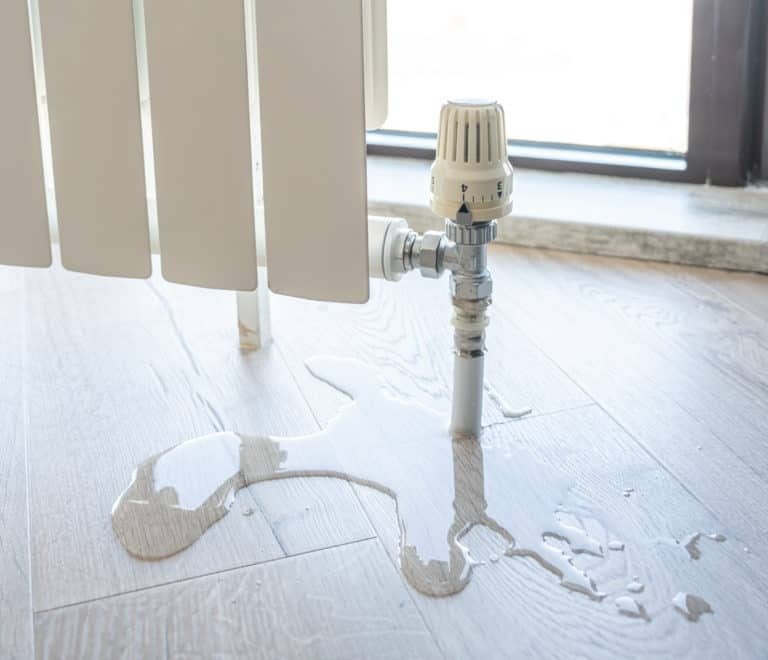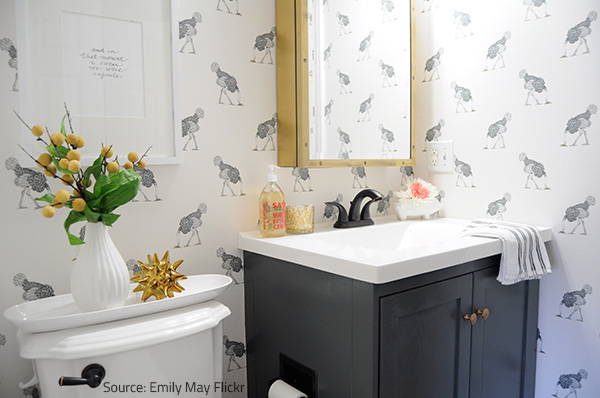Bathroom Leaks as well as How to Deal with Them
Bathroom Leaks as well as How to Deal with Them
Blog Article
Just about every person has got their private thinking on the subject of How to Repair and Prevent Bathroom Water Damage?.

Water damage typically happens in the washroom due to the water used day-to-day. Often, the damage could be a little mold and mildew from the shower. Various other times, it's huge damages on your flooring. Whatever it is, it is always excellent to understand the cause and also avoid it prior to it occurs.
This guide will certainly undergo some of the typical causes of water damage in the washroom. We will also analyze what you can do to prevent these reasons from damaging your shower room. Let's dive in.
5 Usual Reasons For Water Damage in Bathrooms
These are the common factors you would have water damage in your washrooms as well as how you can detect them:
Burst or Dripping Pipelines
There are many pipelines carrying water to various parts of your restroom. Some pipes take water to the bathroom, the sink, the taps, the shower, and also numerous various other locations. They crisscross the tiny area of the bathroom.
Every now and then, these pipes can get corroded and ruptured. Other times, human activity could trigger them to leak. When this occurs, you'll find water in the corners of your washroom or on the wall.
To detect this, watch out for gurgling walls, mold and mildews, or mildew. Call an expert emergency situation plumbing to repair this when it happens.
Fractures in your wall surface ceramic tilesv
Shower room wall ceramic tiles have actually been specially created for that purpose. They safeguard the wall surface from dampness from people taking showers. Nonetheless, they are not indestructible.
In some cases, your washroom wall surface tiles fracture and also allow some wetness to permeate into the wall. This might possibly destroy the wall if you do not take any activity. If you notice a fracture on your wall surface floor tiles, fix it right away. Do not wait till it ruins your wall.
Overflowing commodes and also sinks
As humans, in some cases we make blunders that can cause some water damage in the restroom. For instance, leaving your sink faucet on can create overflowing and damage to various other parts of the shower room with dampness.
Also, a faulty bathroom might trigger overruning. As an example, a busted commode handle or various other parts of the cistern. When this happens, it can harm the flooring.
As quickly as you see an overruning sink or bathroom, call a plumbing technician to assist take care of it right away.
Roofing Leaks
In some cases, the issue of water damage to the restroom might not come from the bathroom. As an example, a roof covering leakage might trigger damage to the bathroom ceiling. You can spot the damages done by considering the water discolorations on the ceiling.
If you discover water spots on your ceiling, check the roof to see if it's harmed. After that, call an expert to help solve the concern.
Excess Wetness
It's amazing to have that long shower and dash water while you hem and haw as well as act like you're executing, yet in some cases these acts could create water damage to your shower room.
Sprinkling water around can cause water to head to edges and form mold and mildews. View how you spread out excess wetness around, and when you do it, clean it up to stop damages.
Conclusion
Water damage to your washroom can be frustrating. However, you can manage it if you stop some of the reasons pointed out in this guide. Call a specialist emergency plumber if you observe any extreme damage.
How to Repair a Water-Damaged Wall in the Bathroom
All you need to know to repair bathroom wall water damage – from identifying the water source to finishing the repair professionally. If you don’t act quickly to resolve a water damage problem, you could find that it develops into a mold issue and/or cause structural damage to your home. Follow this guide to repair your bathroom before it's too late.
All you need to know to repair bathroom wall water damage
Water damage is a common household problem, and one that, if left unrepaired, can quickly lead to structural problems and health issues. The two most likely rooms where water damage may occur is the bathroom and the kitchen – where water is used often and there is high humidity.
What is water damage?
It is easy to think of water damage as caused by a flood or leaking tap or burst water pipe. However, when water damage is assessed, there are three main categories into which water falls (as classified by the American National Standards Institute). These categories are defined as:
Category 1 Water – ‘Clear Water’
This is sanitary water. There is usually no major threat to health by washing with this water, drinking it, or inhaling if it is streaming. Most water that enters your home will be category 1 water, while most water leaving your home will be either category 2 or 3 water. It may also come from melting snow, rainwater and water tanks.
Damage caused by this type of water can usually be repaired or restored, though this doesn’t mean that there are no potential health issues.
Category 2 Water – ‘Grey Water’
This is contaminated water – sometimes considerably so – and will cause illness if consumed or if it comes into contact with your skin. Water damage in this category is often caused by overflows from toilet bowls, and damage to washing machines and dishwashers. While damaged items might still be repaired or restored after damage by grey water, it is more difficult and more expensive to do so.
If the water damage in your home has been caused by grey water, it is advisable to have repairs made by professionals.
Over time, grey water will deteriorate and become black water.
Category 3 Water – ‘Black Water’
Category 3 water, also known as black water, is highly contaminated and a great risk to health. This may contain raw sewage, heavy metals, and other toxic substances. It will smell terrible.
If this is the water that has caused damage in your bathroom, do not touch it. Stop the water flowing if possible, seal the room and call the experts: it really isn’t worth the risk of ill health and disease that could be fatal. It is very unlikely that items can be repaired or restored if they have been damaged by black water.
https://www.porterscleaning.com/blog/how-to-repair-a-water-damaged-wall-in-the-bathroom/

How to Repair a Water-Damaged Wall in the Bathroom
All you need to know to repair bathroom wall water damage – from identifying the water source to finishing the repair professionally. If you don’t act quickly to resolve a water damage problem, you could find that it develops into a mold issue and/or cause structural damage to your home. Follow this guide to repair your bathroom before it's too late.
All you need to know to repair bathroom wall water damage
Water damage is a common household problem, and one that, if left unrepaired, can quickly lead to structural problems and health issues. The two most likely rooms where water damage may occur is the bathroom and the kitchen – where water is used often and there is high humidity.
What is water damage?
It is easy to think of water damage as caused by a flood or leaking tap or burst water pipe. However, when water damage is assessed, there are three main categories into which water falls (as classified by the American National Standards Institute). These categories are defined as:
Category 1 Water – ‘Clear Water’
This is sanitary water. There is usually no major threat to health by washing with this water, drinking it, or inhaling if it is streaming. Most water that enters your home will be category 1 water, while most water leaving your home will be either category 2 or 3 water. It may also come from melting snow, rainwater and water tanks.
Damage caused by this type of water can usually be repaired or restored, though this doesn’t mean that there are no potential health issues.
Category 2 Water – ‘Grey Water’
This is contaminated water – sometimes considerably so – and will cause illness if consumed or if it comes into contact with your skin. Water damage in this category is often caused by overflows from toilet bowls, and damage to washing machines and dishwashers. While damaged items might still be repaired or restored after damage by grey water, it is more difficult and more expensive to do so.
If the water damage in your home has been caused by grey water, it is advisable to have repairs made by professionals.
Over time, grey water will deteriorate and become black water.
Category 3 Water – ‘Black Water’
Category 3 water, also known as black water, is highly contaminated and a great risk to health. This may contain raw sewage, heavy metals, and other toxic substances. It will smell terrible.
If this is the water that has caused damage in your bathroom, do not touch it. Stop the water flowing if possible, seal the room and call the experts: it really isn’t worth the risk of ill health and disease that could be fatal. It is very unlikely that items can be repaired or restored if they have been damaged by black water.
https://www.porterscleaning.com/blog/how-to-repair-a-water-damaged-wall-in-the-bathroom/
Do you enjoy more info about How to Repair and Prevent Bathroom Water Damage?? Put feedback below. We will be glad to listen to your thoughts about this blog entry. We hope that you come back again in the future. Remember to set aside a second to distribute this post if you liked it. Thank-you for taking the time to read it.
Schedule Now! Report this page